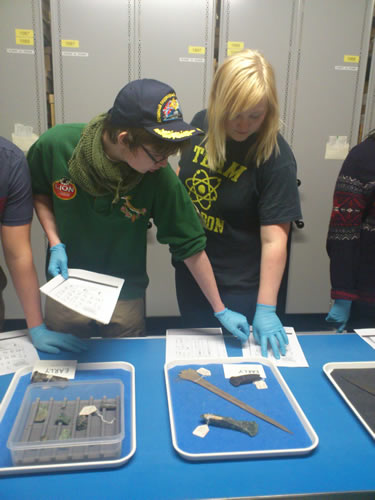
Archaeology students from King Edward VI College attended a study day at the Museum of London Archives this month.
The centre is the largest archaeology archive in the world today and the students were able to get to grips with a range of materials. The day consisted of a range of activities and workshops that covered both the AS and A2 Level courses.
The day began with a short talk by Caroline McDonald, the Senior Curator for Prehistory and Roman artefacts, on Ritual in Prehistory. The students were challenged to really consider what ritual is and to separate it from just religious activity. They were then shown some of the finds from the dig which took place before the Olympic Park was built, where thousands of years of history was uncovered.
This led onto a series of hands-on workshops for the students including learning how to sort and classify pottery and building materials on sites; bronze age metalwork and how manufacturing processes changed over time; then a conservation team from the museum was on hand to explain the processes that artefacts go through after being recovered from sites. As well as metal coins and swords, the students were also shown medieval leather shoes and timbers which had been recovered from a waterlogged site and conserved. The last session was the one many students were waiting for as Jelena Bekvalac, Curator of Human Osteology, demonstrated to students how to identify male and female features on human skulls, and the students also got to see first-hand some of the damage to skulls due to violent deaths in the Iron Age.
The day ended with another fascinating talk on the victims of dissection in the nineteenth century, and this led onto a short discussion on whether human remains should be displayed in museums and if so, how they should be used. The students really enjoyed their day; Michelle Thick who teaches Archaeology at the college said “This was a fantastic opportunity for students not just to see but touch real artefacts and gain first-hand knowledge from experts, something that many archaeology students don’t get the chance to do before the second year of their university courses.” Tom Godwin, a second year student said, “It was a fantastic day, it enabled us to experience the almost unique opportunity of handling and examining artefacts and human remains from over 2500 years ago, and provided an excellent opportunity to discuss the real ethical issues in archaeology.”

